10 Incredible Facts About Mount Rainier
Situated in the scenic Cascade Mountains of Washington State, Mount Rainier is one of the most iconic and beautiful landmarks in the Pacific Northwest. On clear, sunny days, you can spot the mountain’s majestic peak from several miles away! Mount Rainier is like its own unique separate world high up in the sky, with phenomenal ancient forests, colorful meadows, and massive glaciers. Join us as we take a closer look at several incredible facts about Mount Rainier!
1. Mount Rainier Is an Active Volcano
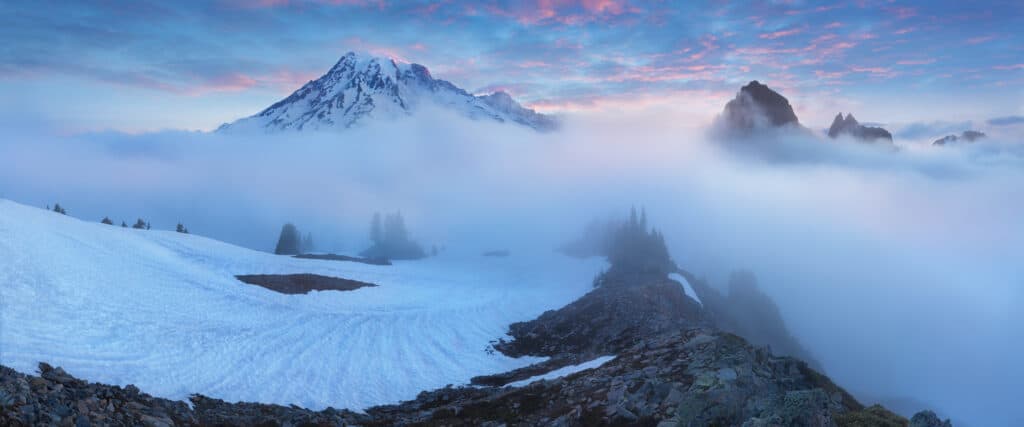
©Michal Balada/Shutterstock.com
Mount Rainier is not just a breathtaking mountain — it’s also an active volcano! Located within the Cascade Volcanic Arc in the Pacific Northwest Cascade Range, this incredible mountain is a stratovolcano, made up of hardened volcanic debris like lava and tephra. Stratovolcanoes form when magma erupts from a hole in the ground. The magma cools down and hardens fast, creating layers of lava and volcanic debris. As time goes by, the layers pile up on top of each other, building a tall and cone-shaped mountain, just like Mount Rainier.
2. Mount Rainier Is More than 500,000 Years Old
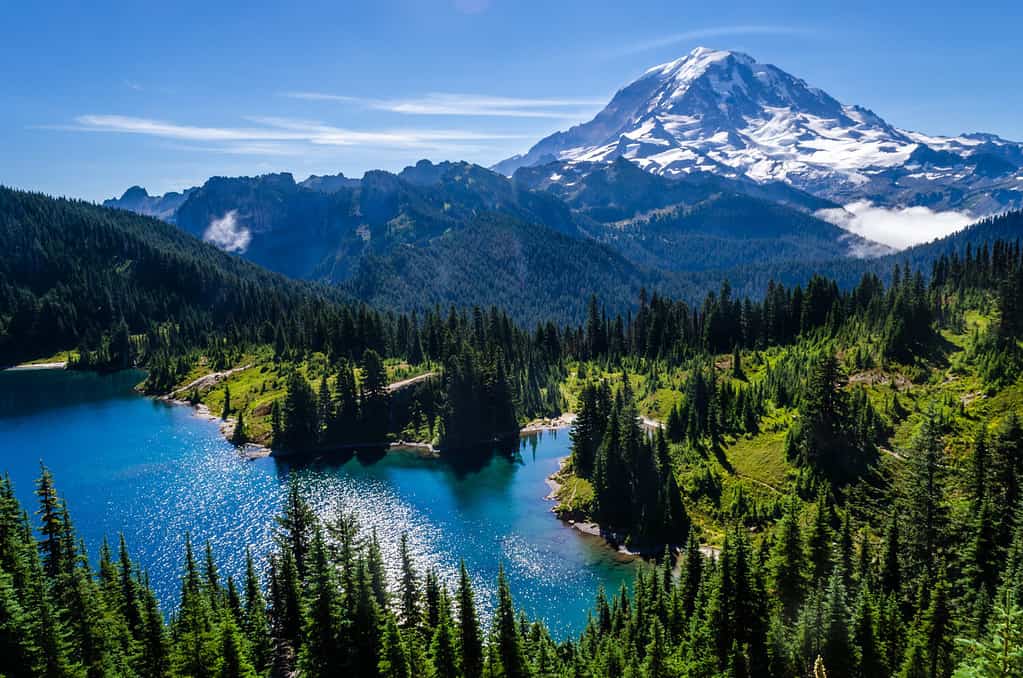
©KYPhua/Shutterstock.com
Around one million years ago, volcanic activity began stirring within an ancient cone, leading to the formation of Mount Rainier as we know it today. Layer by layer, this incredible stratovolcano formed atop an eroded ancestral cone about 500,000 years ago.
You can still see portions of that early ancestral cone — part of what is now known as the Lily Formation — in Mount Rainier National Park. The Lily Formation is made up of different types of rocks created from volcanic elements like breccias, conglomerates, and sandstones. These rocks formed when volcanic materials got worn down and piled up by ancient volcanoes in the Cascade Range.
3. Mount Rainier Is One of the Most Dangerous Volcanoes in the World
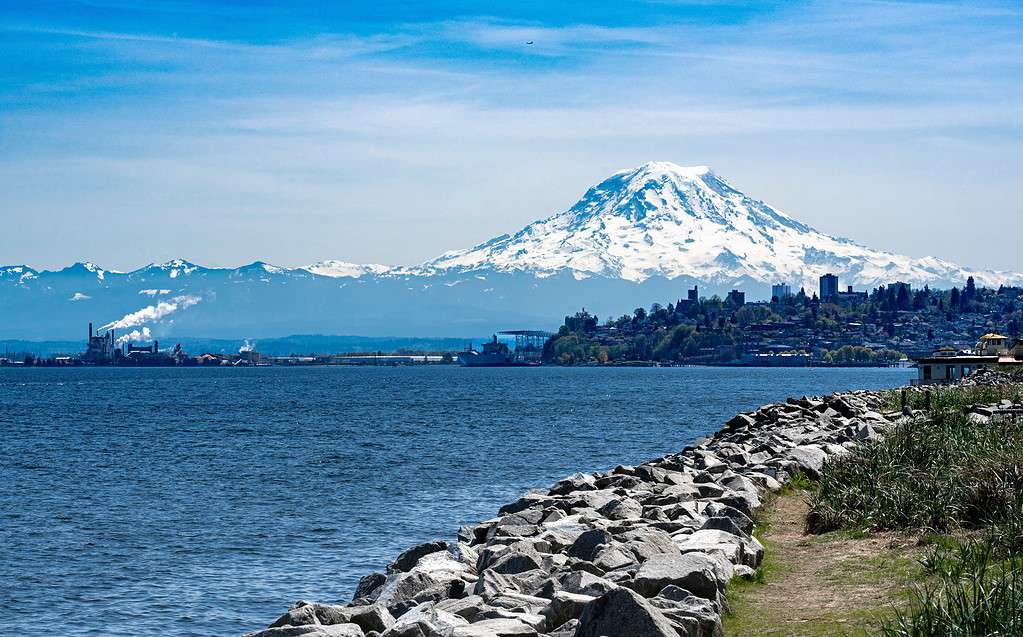
©Jeff Westhead/Shutterstock.com
Based on chemical analyses, scientists believe that Mount Rainier’s most recent magmatic eruption was about 1,000 years ago. Studies of Mount Rainier’s eruptions over the past 2,600 years show that there were around 10 to 12 eruptions during this time. They involved lava flow and some pyroclastic flows (a mix of hot gas, ash, and rocks). Fortunately, today scientists actively monitor Mount Rainier to watch for any potential volcanic activity.
Mount Rainier is listed as a “Decade Volcano” by the International Association of Volcanology and Chemistry (IAVCEI). A decade volcano is one that poses a significant risk to life and property in the area surrounding it. As a stratovolcano, Mount Rainier is prone to extremely explosive eruptions. When this mountain gets all fired up, it can shoot enormous columns of ash for miles into the sky. In addition, these explosive eruptions can cause pyroclastic flows, which are like fast-moving combinations of hot gas and rock fragments. Pyroclastic flows travel down the volcanic slopes at lightning speed like a fiery avalanche, leaving nothing in their wake.
In addition, the volcanic eruptions of Mount Rainier can melt its many glaciers too quickly. The rapidly expanding steam can produce a powerful explosion. This can also trigger fast-moving mudflows called lahars, which are also very destructive. In fact, according to experts, Mount Rainier’s future eruption could cause even greater damage than Mount St. Helens did in 1980!
4. Mount Rainier Is the Tallest Mountain in Washington State and the Highest Peak in the Cascade Range
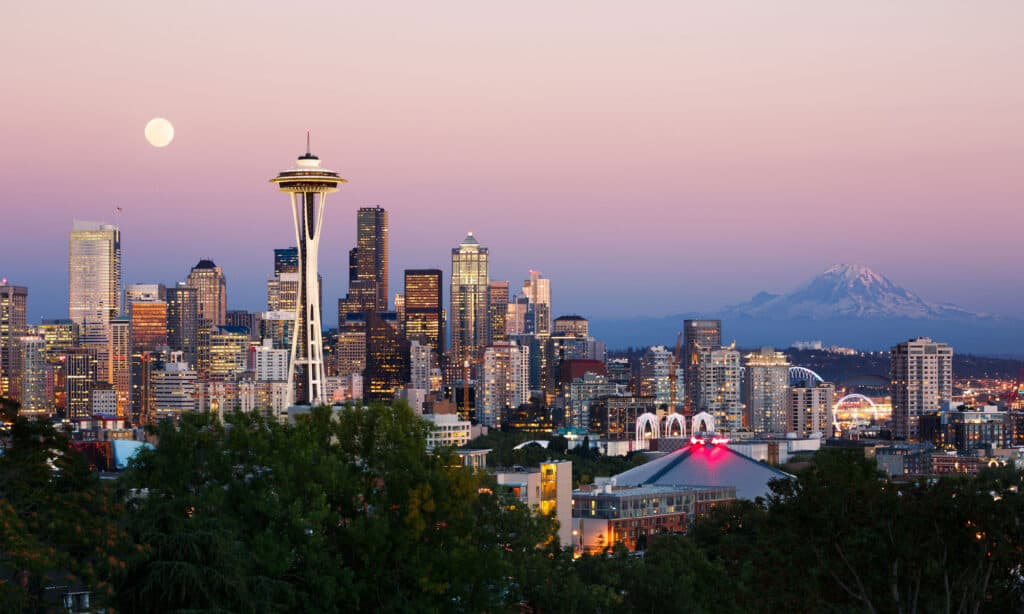
©iStock.com/Beboy_ltd
With its incredible size and majestic presence, Mount Rainier provides one of the most beautiful views in the Pacific Northwest. Rising 14,410 feet tall, Mount Rainier is the tallest mountain in Washington State and the highest peak in the Cascade Range. However, believe it or not, it used to be even taller! Its largest volcanic eruption ever occurred 5,600 years ago and was so powerful that it blew its top off! A large chunk of its summit collapsed, reducing it from 16,000 feet tall to 14,410 feet tall. Mount Rainier’s largest volcanic eruption ever, however, occurred about 5,600 years ago.
5. There Are Over 20 Enormous Glaciers on Mount Rainier
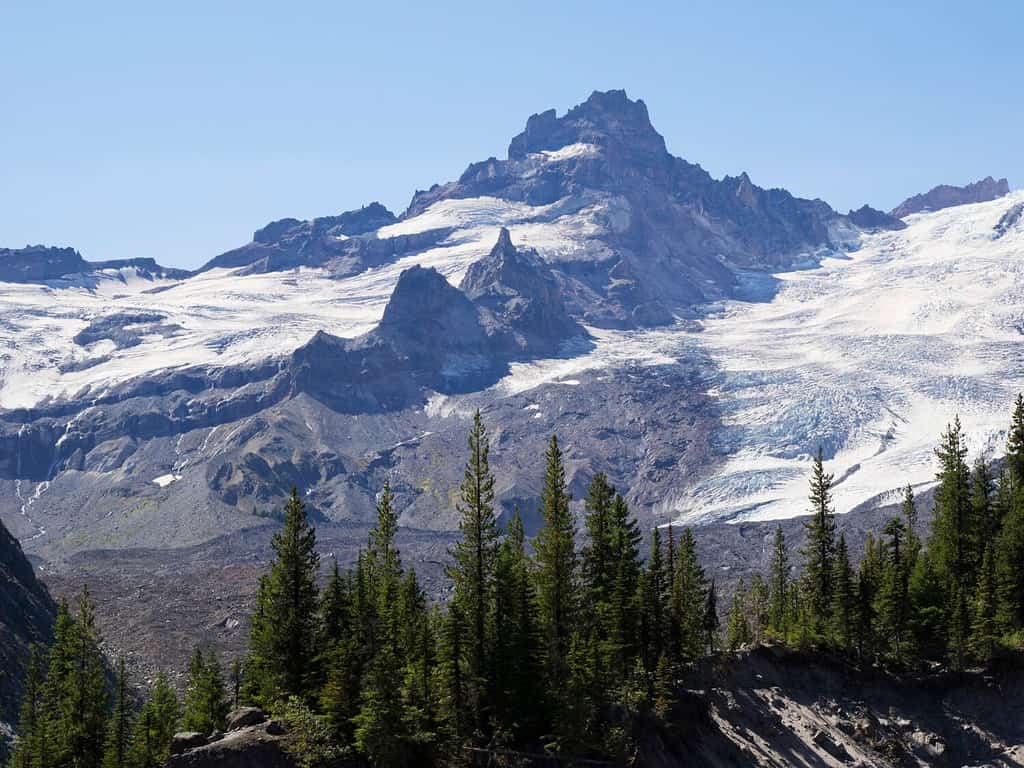
©Danita Delimont/Shutterstock.com
Mount Rainier’s snowy peak is an iconic sight and has over 25 square miles of permanent ice and snow. Currently, it has 28 named glaciers in addition to many other unnamed ice and snow patches. Mount Rainier’s many glaciers cover about 30 square miles. Its largest, the Emmons Glacier, covers an area of 4.3 miles. Mount Rainier’s many glaciers are extremely important and provide water for rivers, wildlife, and hydroelectric power.
Unfortunately, however, due to climate change, the glaciers have been receding and thinning at a very alarming rate. In the last 150 years, they have lost about 25% of their surface area! This is a problem for several reasons. When glaciers melt, they lighten the load on the Earth’s crust, which in turn can cause it to lift up, crack, and fracture. This causes a dangerous chain reaction as magma makes its way to the surface through these openings, resulting in an eruption. In addition, the melting glaciers could cause phreatic eruptions, producing miles-high ash columns, pyroclastic flows of rock fragments and hot gas, and fast-moving mudflows or lahars.
6. Mount Rainier Has Three Summits
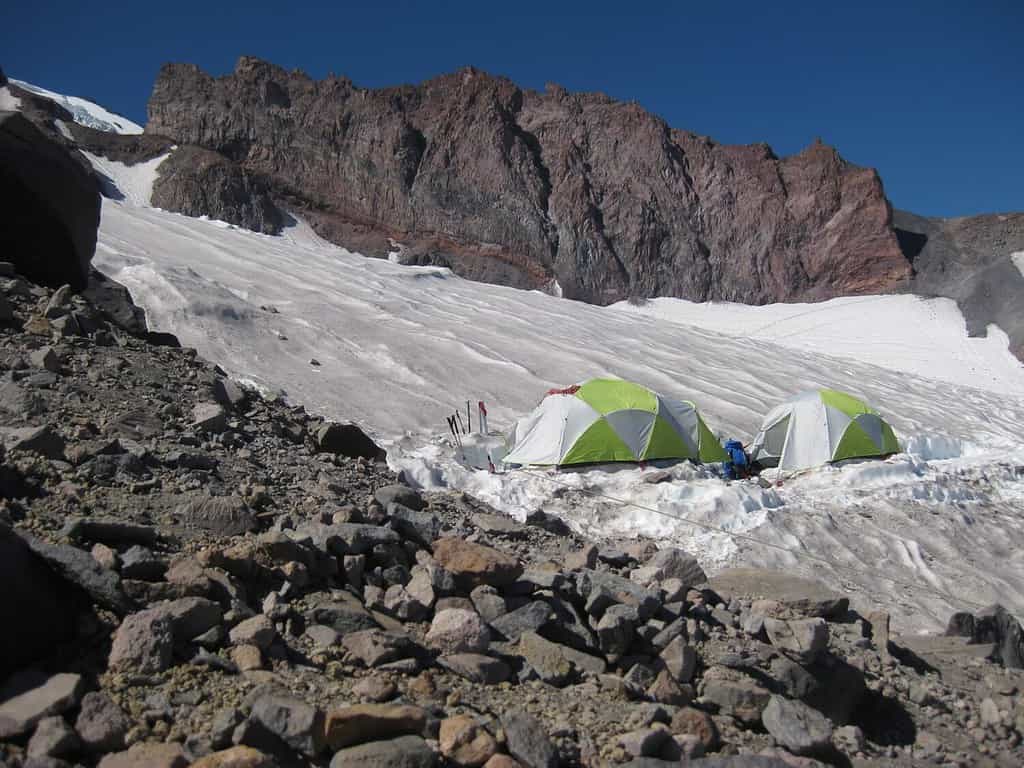
©Angela Feltes/Shutterstock.com
Mount Rainier is so ginormous that it actually has three separate summits! The first, Columbia Crest, is the highest at 14,411 feet above sea level. The second, Point Success, stands at 14,158 feet above sea level. The third, Liberty Cap, stands at 14,112 feet above sea level. Climbing to any of Mount Rainier’s three summits is no easy feat. The journey takes two to three days, and only about half of the climbers actually succeed due to the weather and the climbers’ physical condition.
However, despite the challenge, around 8,000 to 13,000 people each year attempt to scale Mount Rainier. To tackle such a monumental task, climbing teams must have experience in glacier travel, self-rescue, and wilderness exploration. The most popular of the three summits is Columbia Crest via the Disappointment Cleaver Route. It is a challenging and rather steep climb, but the route is well-maintained and climbers can use the fixed lines for assistance. Many climbers also enjoy trekking to Point Success summit, although it is much more difficult. Liberty Cap Summit, however, is the most grueling of them all.
7. There Are Over 250 Miles of Hiking Trails at Mount Rainier
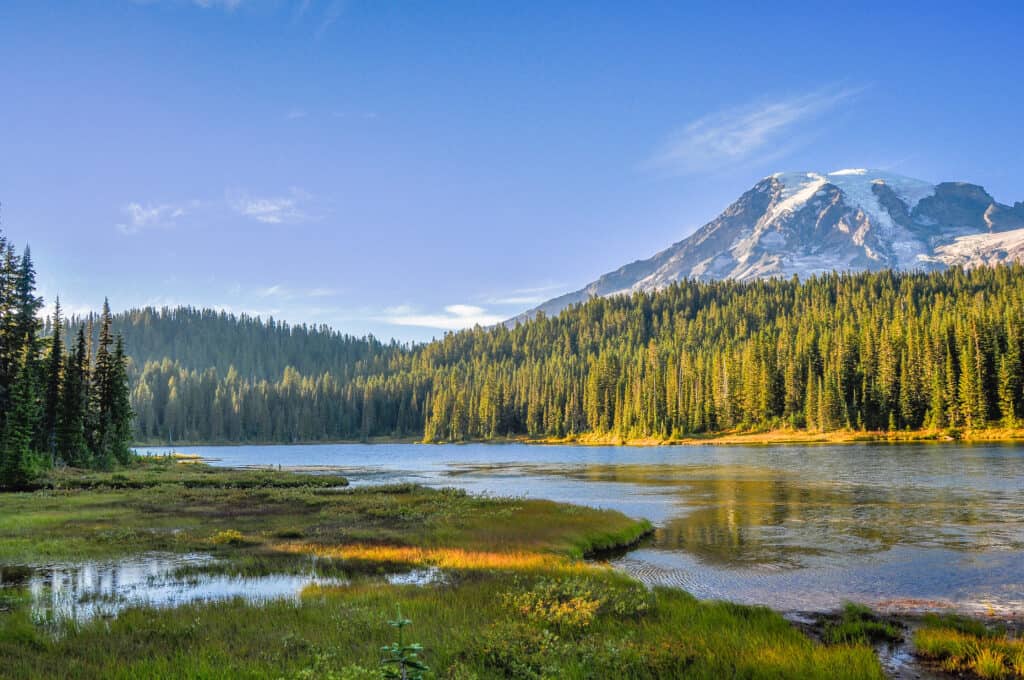
©Vidpen/Shutterstock.com
With over 250 miles of hiking trails at Mount Rainier, there is something for everyone, no matter your experience. From trails that take several days to easy family-friendly day hikes, anyone can enjoy the mountain’s incredible vistas and atmosphere.
The Wonderland Trail, for example, encircles Mount Rainier with 93 miles of elevation changes, valleys, high alpine areas, and lowland forests. The Nisqually Vista Trail, on the other hand, is only a 1.2-mile round trip on a fully pale paved trail.
8. A Pilot in the U.S. Air Force Landed on Top of Mount Rainier
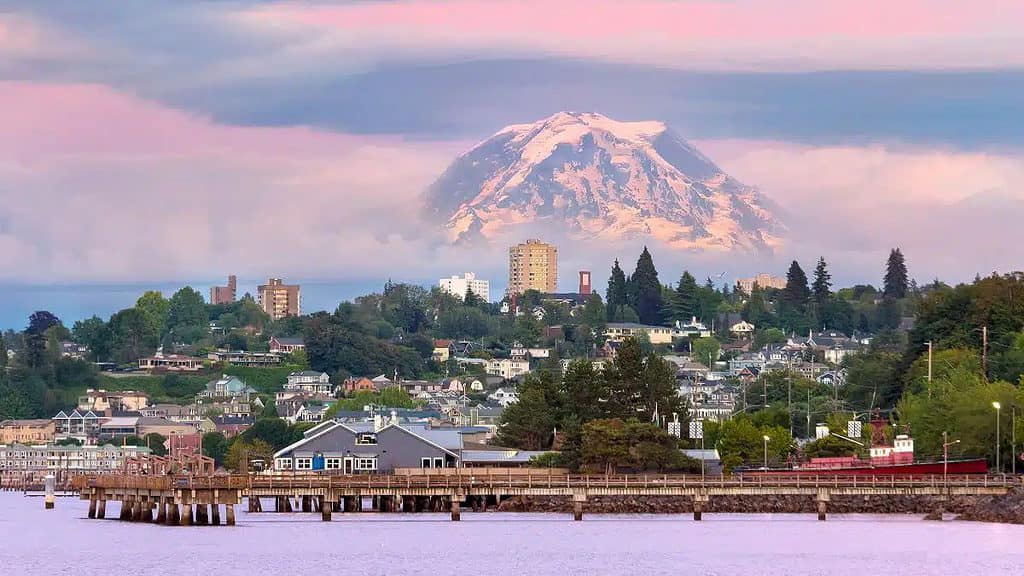
©Thye-Wee Gn/Shutterstock.com
In 1951, Lieutenant John W. Hodgkin wanted to claim the world record for high-altitude landing. So, he illegally flew his small Piper J-3 Cub up to a snowy field just outside the volcano’s crater, between Success Point Summit and Columbia Crest Summit atop Mount Rainier.
After recording his feat with photographs, however, Hodgkin’s plane refused to start back up! Hodgkin had to stay the night on top of the mountain, with 40 miles per hour winds and temperatures dropping to 20° below zero. Unbeknownst to Hodgkin, a rescue party was sent, but it would take them at least two days to get to his location. By the time they made it to the summit, Hodgkin was gone!
Running out of options, Hodgkin attempted to jumpstart the plane by sending it sliding toward the steep face of the mountain’s Nisqually Glacier. The plane dove through the air for 5,000 feet, but unfortunately, the engine refused to reignite. In the end, Hodgkin skillfully made a “dead-stick” emergency landing on the Frozen Mowich Lake, about two-thirds of the way down the mountain.
9. There Are Nearly 200 Animal Species Living on and near Mount Rainier
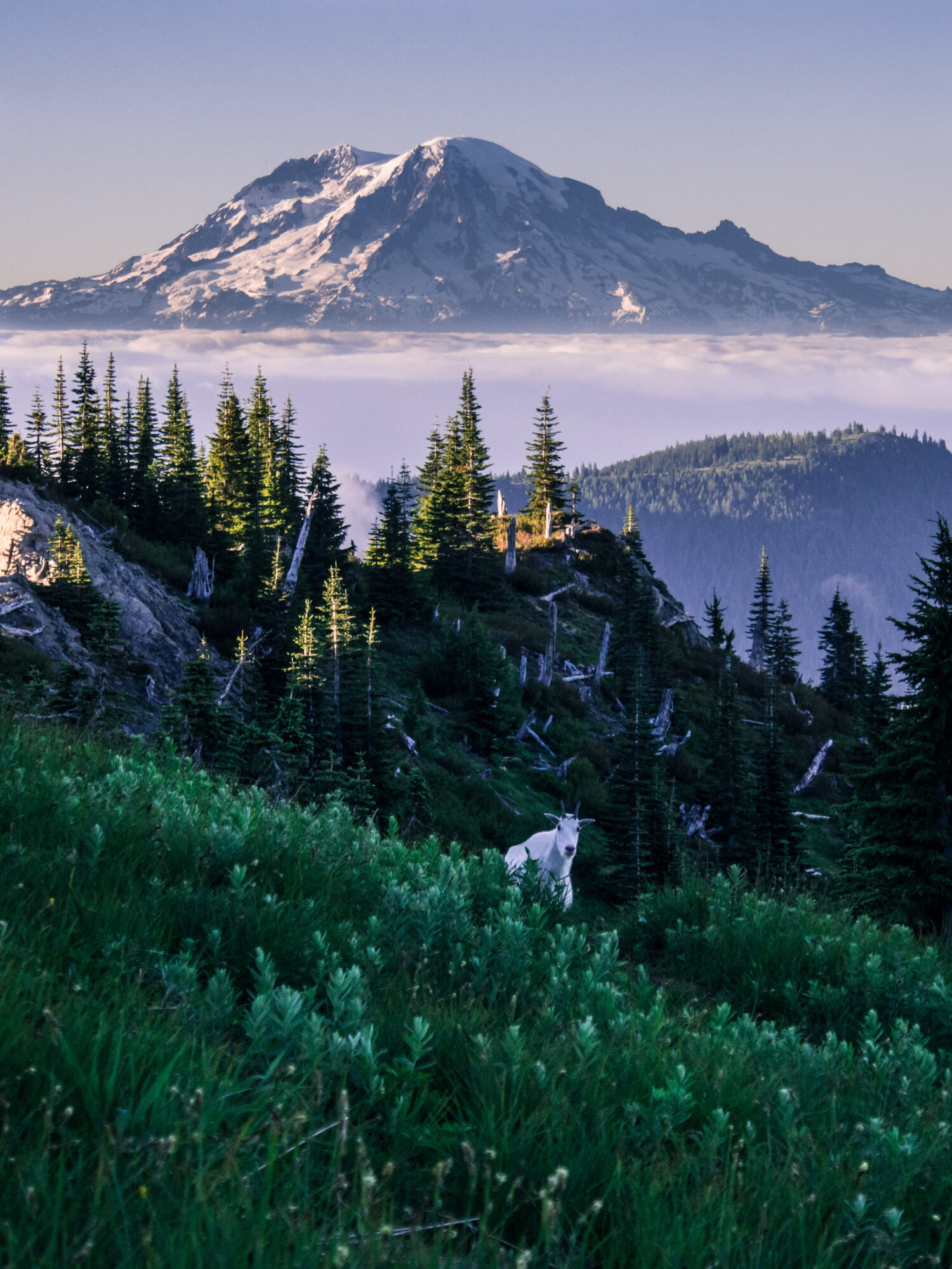
©Keri in the Wild/Shutterstock.com
Mount Rainier is an incredibly diverse ecosystem with at least 200 different species of animals! Some of the larger animals that call the mountain home include black bears, mountain lions, wolverines, elk, moose, black-tailed deer, coyotes, bobcats, and mountain goats. Although small carnivorous fishers were once locally extinct in Washington State, recently scientists have begun to reintroduce them to Mount Rainier National Park.
Mount Rainier is also home to many species of weasels and skunks, along with raccoons, porcupines, beavers, snowshoe hares, and Cascade red foxes. Numerous small mammals can be found here as well, like bats, pikas, squirrels, and moles. Amphibians like the Pacific chorus frog, western toad, ensatina, and coastal giant salamander enjoy the cool, moist climate of the mountain, along with a few smaller snakes. And if you’re lucky, you might even catch a glimpse of a bright yellow banana slug!
In addition, Mount Rainier National Park is home to birds of all shapes and sizes. Hikers often spot birds of prey like bald eagles, peregrine falcons, northern goshawks, golden eagles, red-tailed hawks, and owls. There are also colorful songbirds and jays, cute chickadees, noisy woodpeckers, and tiny hummingbirds.
10. There Are Also over 960 Plant Species in Mount Rainier National Park
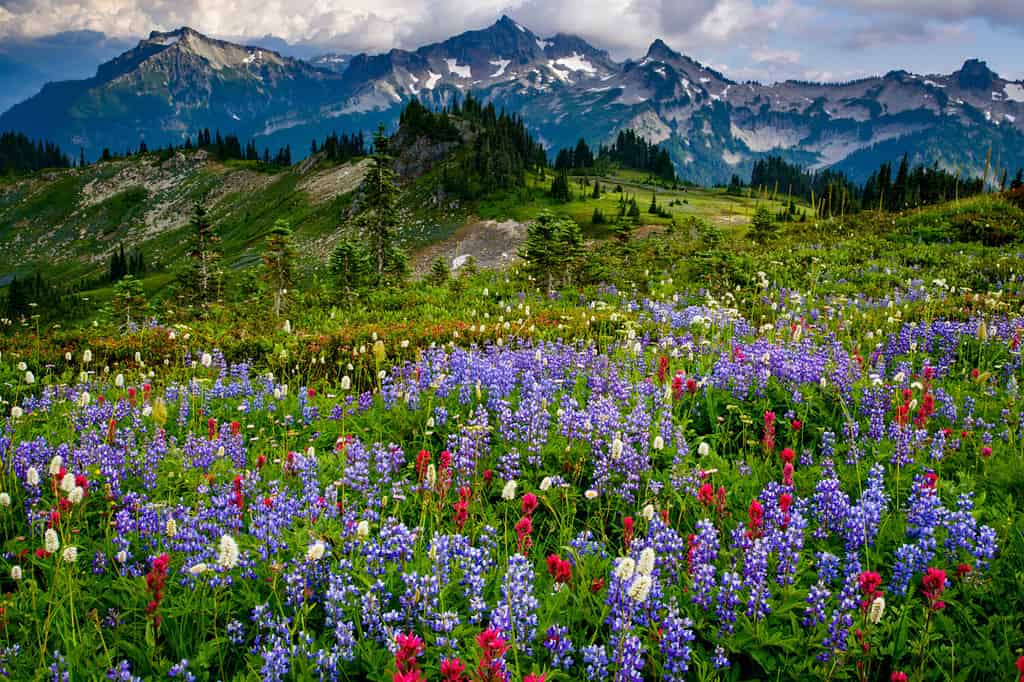
©Danita Delimont/Shutterstock.com
In addition to the amazing animals that call the mountain home, there are also over 960 plant species and various mushrooms and fungi found in Mount Rainier National Park. In fact, Mount Rainier’s spectacular wildflower meadows are famous throughout the world, bursting with color in July and August.
Mount Rainier National Park consists of three different life zones filled with uniquely adapted plants and animals. From 1,700 to 5,000 feet in elevation, the forest life zone is damp and lined with enormously wide trees over 1,000 years old! There are fewer trees in the Subalpine Life Zone, from 5,000 to 7,000 feet in elevation. This zone opens up into colorful wildflower meadows in the summer and an average of 54 feet of snow in the winter! From 7,000 to 14,410 feet in elevation, the Alpine Life Zone is a much harsher environment with few plants, other than small heather shrubs and lichen.









